Equinoxes, Solstices and the idea of universal consciousness
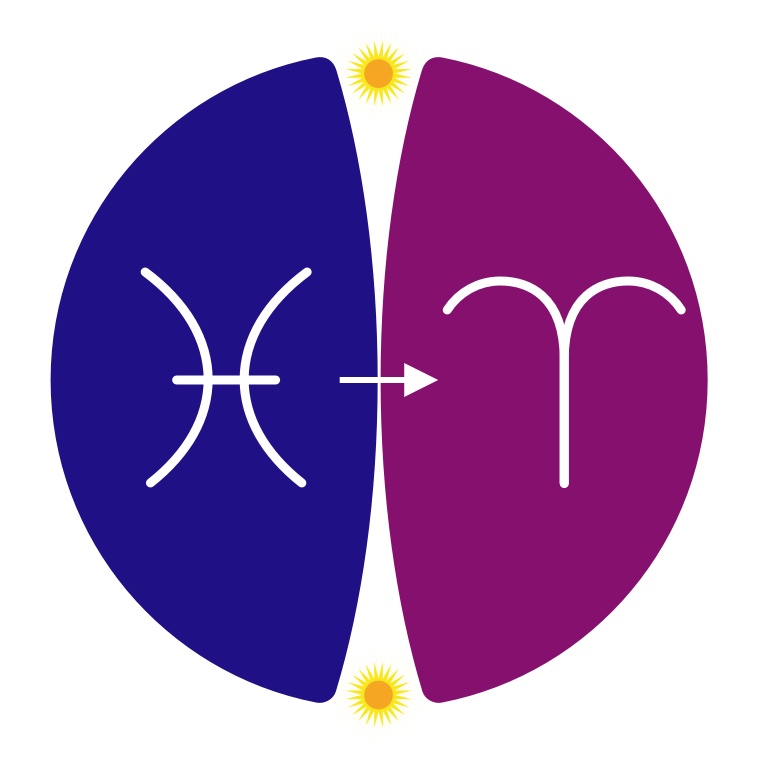
In each year there are four days, or rather precise moments: the two Equinoxes and two Solstices that carry a very special astrological meaning. The Equinoxes and Solstices are brief windows in time and space that connect us to the broader experience of universal consciousness.
In each year there are four days, or rather precise moments: the two Equinoxes and two Solstices that carry a very special astrological meaning. The Equinoxes and Solstices are brief windows in time and space that connect us to the broader experience of universal consciousness.
Understanding one’s own mind begins with making a connection between “me and what I think” and truly infinite expanse of the notion of universal consciousness. It is an experiential leap of faith that takes one from concepts and ideas to direct experiences and realisations.
Like no other times of the year, the moments of Equinoxes and Solstices carry very special energies that enable us to “peek” into the cosmic expanse.
This story will explore what makes Equinoxes and Solstices such powerful time windows and how those experiences can enhance our own individual consciousness.
An illusion of the 1st of January
While the civil calendar uses the 1st of January to mark the beginning of each new year, that choice has a very little value, if any, when it comes to astrology and even astronomy.
The moment of every New Year is celebrated as the “new beginnings” and “new cycle” while in reality the 1st of January fails to deliver its promises.
The 1st of January is a purely imaginary dividing line that is supposed to separate the past from the future. Alas, nothing of astronomical significance actually happens at the midnight of the 31st of December! What do we do about that?
We have somewhat touched this topic on the story “The phases of the Moon throughout the human life, or why ”New Year’s resolutions” is a bad idea”. In the current story we will attempt to take this further into the domain of universal cosmic consciousness.
In order to succeed, we need to detach our thinking from the civil calendar and look into the astronomical reality in order to find the “true 1st January”.
When does the astrological year begin?
As we all know, the Earth travels around the Sun in a nearly circular orbit, and all circles share a peculiar quality of neither having a beginning nor an end. Circle is the symbol of infinity and the unity of spirit.
Yet, it is experientially apparent that the time unfolds itself in a manner that is more akin to a spiral than a circle:
- spiral is the symbol of repetition of patterns
- spiral is the symbol of evolution through repetition
This spiral-like progression of time and human experiences through time require us to allocate some kind of a zero moment that marks the beginning of each next cycle. It does make sense to have a New Year’s moment for the purpose of astrological interpretations and directions.
Our previous story “The Sidereal Zodiac in astrology, its strengths and weaknesses” discussed the idea of “The zero point of the Zodiac” being the vernal Equinox that occurs about the 20th March each year.
The vernal Equinox, that is also called the March Equinox or the Northern Equinox, offers a mathematically precise zero moment dividing the spiral of time into clear cut segments.
And this is a good time to take a short detour and introduce the idea of universal consciousness…
The idea of universal consciousness
While it may sound like a New Age concept, the idea of universal consciousness is at least 2,500 years old.
According to what we know, the concept of universal consciousness was introduced by a Pre-Socratic Greek philosopher named Anaxagoras, one of true pillars behind the modern Western philosophical tradition.
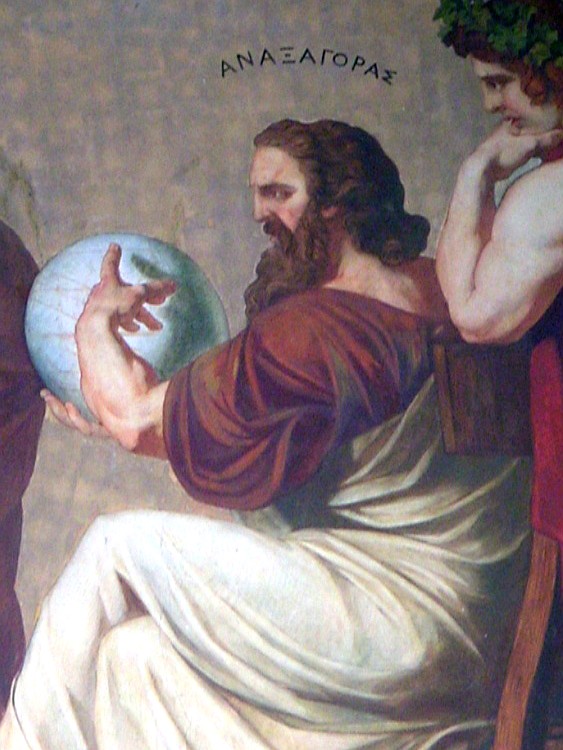
Anaxagoras is revered for his unending search for knowledge and enthusiasm for science and humanity. His research of the movements of the celestial bodies and other celestial phenomena resulted in a theory of a larger universal order where a mix of primary material components is governed by the ordering intelligent force, or nous.
The philosophical concept of nous comes from the Greek word νοῦς (or νόος) and roughly equated to the human ability to know the truth, or the faculty of discernment that allows to clearly separate true propositions from false.
An important distinction has to be made — the nous is a decision making faculty that doesn’t apply to the animal world. The animals and all other lower forms of life act accordingly to their awareness (gnó̱si̱ in Greek) that is not capable of abstract individual thinking, a distinct function unique to nous and Spirit in general.
Universal consciousness is only one step up from an individual human intellect. The intricacy of the cosmic order, sophistication of the world of quantum physics and the unique ever-expanding balance of the physical universe are the clear indicators of the governing super-consciousness. And this is exactly what Anaxagoras has been teaching about — that each of humans has a living connection to the universal consciousness, or universal mind.
Using our individual faculty of nous, we could perhaps transform the notion of God into Nous, thus moving away from the image of a white-bearded bloke sitting on clouds towards a more abstract and sophisticated principle of universal intelligence sans any gender related attributes.
What happens at the time of Equinoxes and Solstices?
The seasonal cycle is the key to life on Earth, without seasons the life would only be possible around the narrow equatorial band. Arguably, incredible richness and variety of life forms on Earth are due to the 23.4º tilt of the Earth’s axis relative to the solar ecliptic plane.
Without going any further into astronomy, we can visualise two circles tilted 23.4º relative to each other:
- one circle is called the ecliptic plane and represents the Earth travelling around the Sun
- another circle is called the equatorial plane that is formed by the Earth rotating around its axis
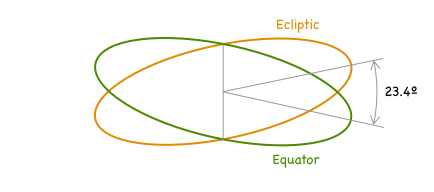
We can immediately spot several points:
- two points where the circles intersect
- two points where the circles have maximum separation 
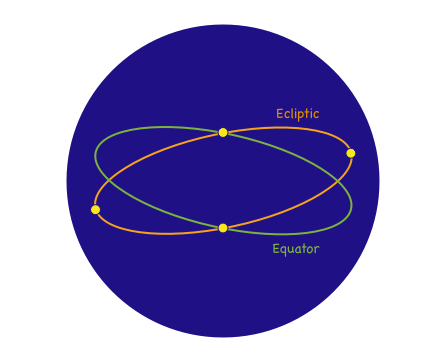
And that’s all to it! The intersections are the equinoxes, the points of maximum separations between the two circles are the solstices.
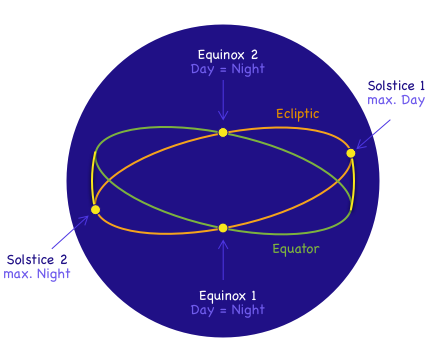
Having two intersections provides a very simple and clean delineation of the annual circle. Astrologically speaking, the equinoxes carry the symbolism of conjunction while the solstices represent the astrological opposition due to their quality of maximum separation.
Reinventing the astrological calendar
Well, a calendar that is based on equinoxes is nothing new, it has been invented centuries ago in Persia and is called the Solar Hijri calendar.
As of today, the Solar Hijri calendar is the official calendar in Iran and Afghanistan. The new year is perfectly aligned with the March Equinox that is called Nowruz also known as the Persian New Year.
What even more beautiful is that each month corresponds to a Zodiac sign! A perfect astrological measurement instrument.
It is worth noting that this is a Sun-based calendar as opposed to Lunar-based calendars still used in the Old World countries. The strength of the Sun-based calendar is its unbeatable precision and the Solar Hijri calendar is no exception still being the most accurate solar calendar in the world.
Equinox as the window to universal consciousness
Pondering further on the principle of the two intersecting circles, one may intuit that something special should be taking place at those moments.
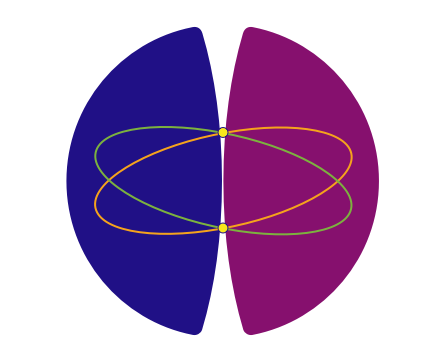
Symbolically speaking, the equinox is not only a “cosmic conjunction” for the Earth they are also the moments of maximum alignment between the Earth’s day and night, the most fundamental dualism we have discussed in “Day and Night in the Western astrological chart” story a few months ago.
Having such moments of alignment opens up a brief time window into the workings of the universal scale that are usually conspicuous and being obscured by the noise of daily life.
One may visualise the astrological year as a continuous sine-like wave ever oscillating between the moments of maximum and minimum of daytime duration (solstices), while briefly passing through the “zero” moments at the times of equinoxes when day and night have equal length.
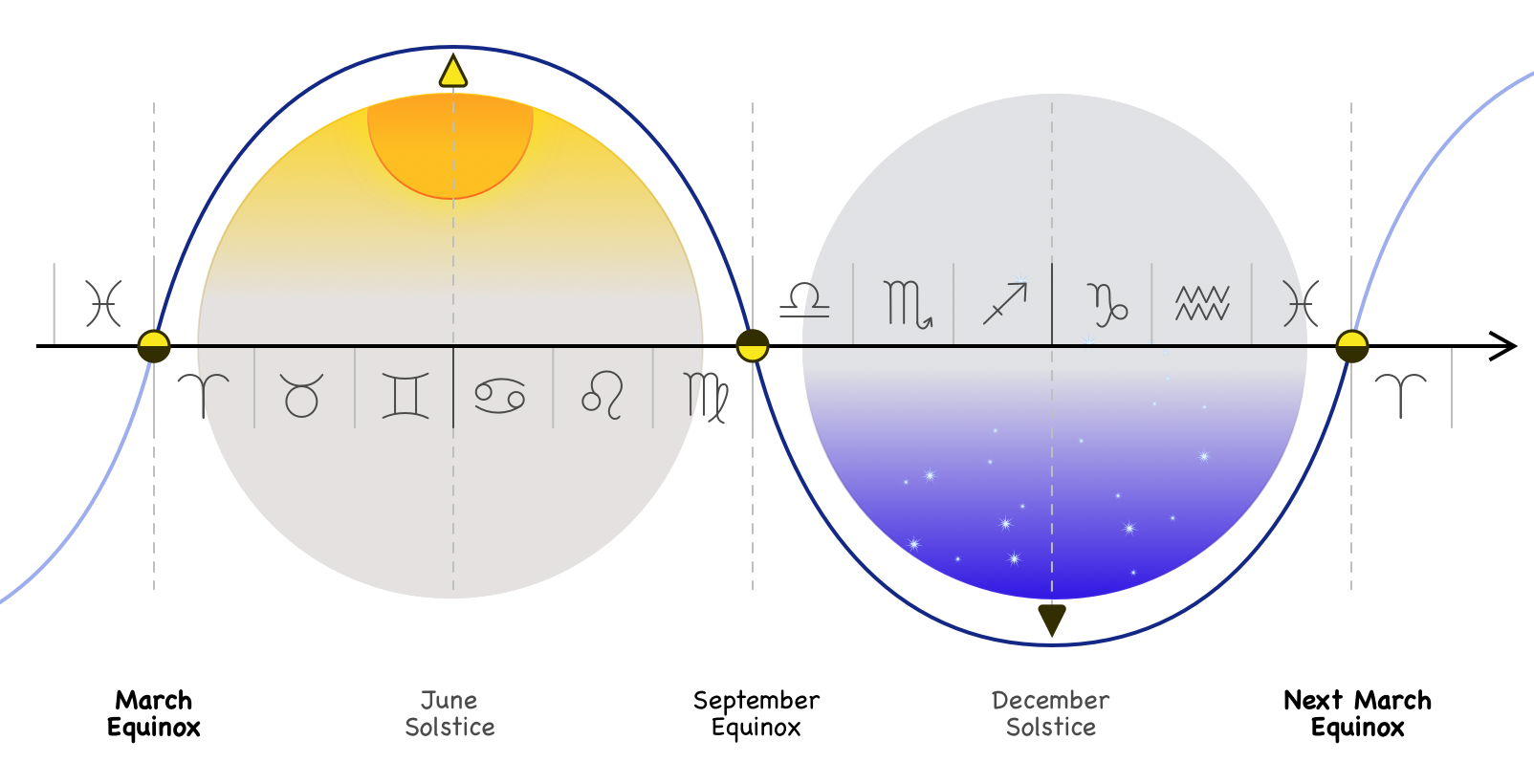
The equinoxes stand for:
- conjunction marking the new arrival of the next phase
- silence as the cup is getting emptied ready for the new cycle
- maximum flexibility to set the direction for the next year
- correspond to the New Moon phase
The solstices symbolise:
- astrological opposition between dialectically charged energies
- maximum of confrontation
- peak of unfoldment and realisation
- correspond to the Full Moon phase
The fourfold solar year based on equinoxes and solstices opens the door to truly synchronising one’s individual rhythm with universal consciousness. Just as there are solid laws in quantum physics so there are laws that govern the motion of celestial bodies and the flow of time that comes out of that movement.
Everything in life is about the right timing, isn’t it? Both good and bad things happen when their time is ripe. The solar year provides a “normalising” instrument and a model that facilitates the flow from the universal mind into our personal awareness.
The universal rhythm and the mystery of the DNA double helix
The illustration above is for the Northern Hemisphere when the June Solstice marks the longest day of the year and the December Solstice is the shortest day of the year.
For the Southern Hemisphere the picture is obviously flipped: the June Solstice is the shortest and the December Solstice is the longest day of the year. The Equinoxes are the same for both hemispheres, they are the moments of perfect balance when neither day nor night “wins”.
Combining both Northern and Southern Hemispheres we get a double helix spiral so much similar to the omni-present DNA spiral.
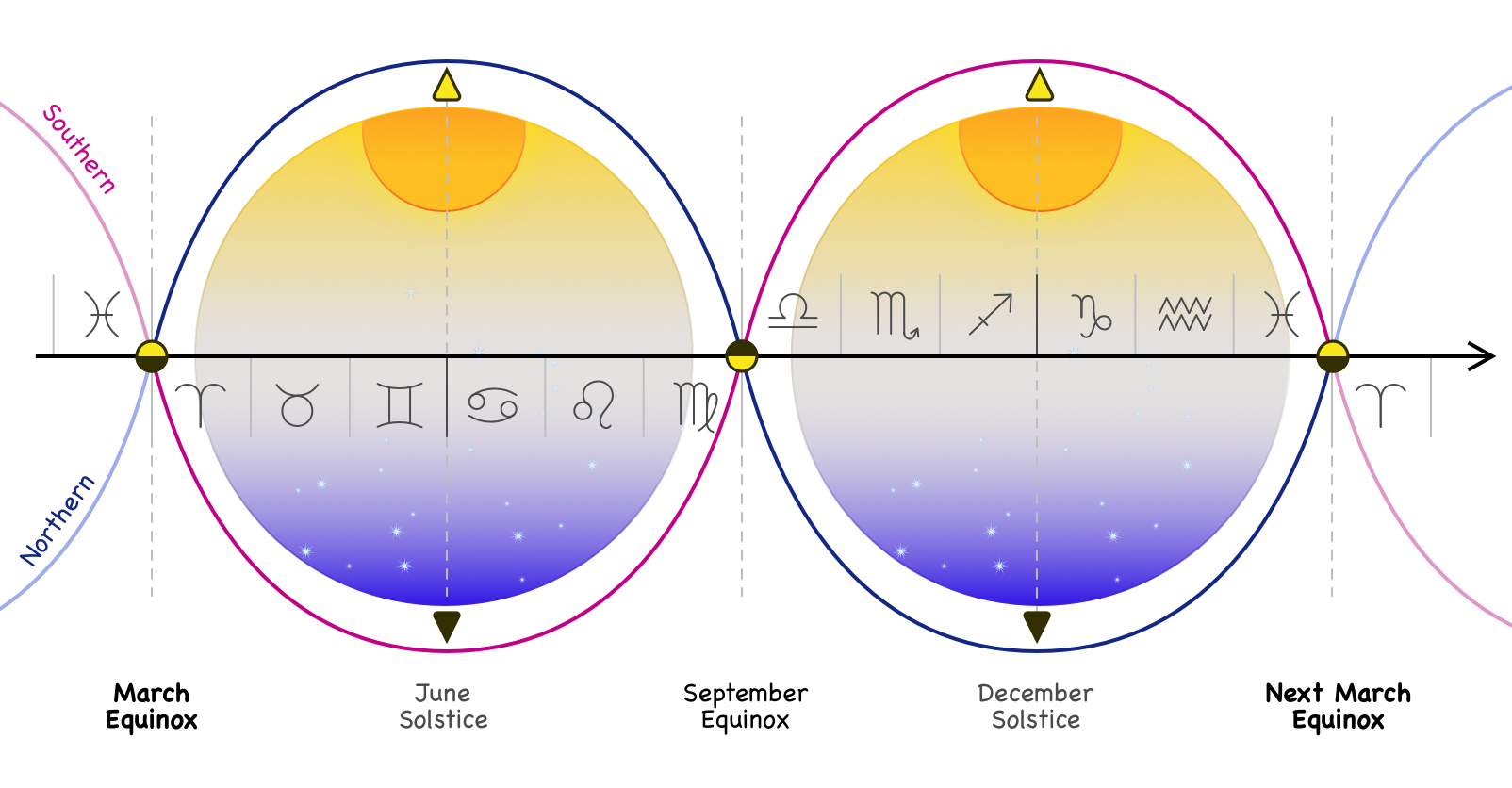
This double-helix spiral is a universal rhythm that pulses in both each human as in the whole of the Solar System and perhaps the universe itself. The significance of the mysteries of this universal rhythm warrants for a future story about Mercury and hermetic alchemy.
Why is the March Equinox more powerful?
Since there are two Equinoxes, how do we know which Equinox marks the beginning of next year?
Firstly, the Zodiac has been conceived in the Northern Hemisphere and the vernal Equinox — the word “vernal” is Latin for “spring” — starts the new cycle of growth and procreation. It is the time when the cold of winter recedes and the warmth spreads across the land giving birth to myriads of life forms.
Secondly, the quality of the spring movement is well reflected in the Sun crossing the Zodiac cusp between the 12th and the 1st signs:
- from the sign of Pisces — watery and cold and dissolved
- into the sign of Aries — fiery, active, dynamic and procreative
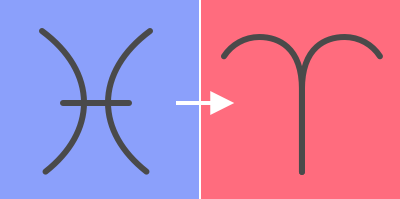
And we believe that the Pisces–Aries dialectic is what makes the vernal (March) Equinox the dominant event of the astrological year. Just the sheer contrast of energetic difference between the Pisces–to–Aries transition compared to the Virgo–to–Libra transition that marks the September Equinox makes the vernal Equinox the clear winner.
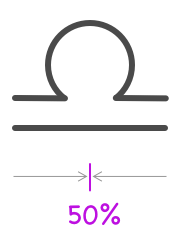
Thus Libra and the September Equinox have a very special place and function — the halfway mark that is a cosmic re-balancer. The September Equinox is a perfect time to pause and adjust the balance between the last and future six months of the astrological year.
A few practical points
Don’t take New Year’s Eve too seriously, it does not have much cosmic meaning. No point in making resolutions that aren’t aligned with the grand scheme of things.
Be serious about the vernal (March) Equinox. That’s when the seed of your intentions may have a higher chance of success:
- Set your plans, goals and inspirations just before the exact moment of the vernal Equinox
- Watch the creative impulse unfold up to the June Solstice when it will reach its first maximum in 3 months
- The second September Equinox will offer you a correctional opportunity to further refine your plans and reinforce the alignment on your purpose
- Maintain the intensity of the second wave toward the December Solstice and enjoy Christmas just a few days after
- Use the last three months of the solar year to deepen your success getting ready for the next vernal (March) Equinox
… and so on.
If taken seriously, each vernal Equinox will offer you a unique cosmic opportunity to shape your creative impulses and stay connected to the bigger universal consciousness and thus ultimately succeed!
Comments
MeLi
Wonderful breakdown!